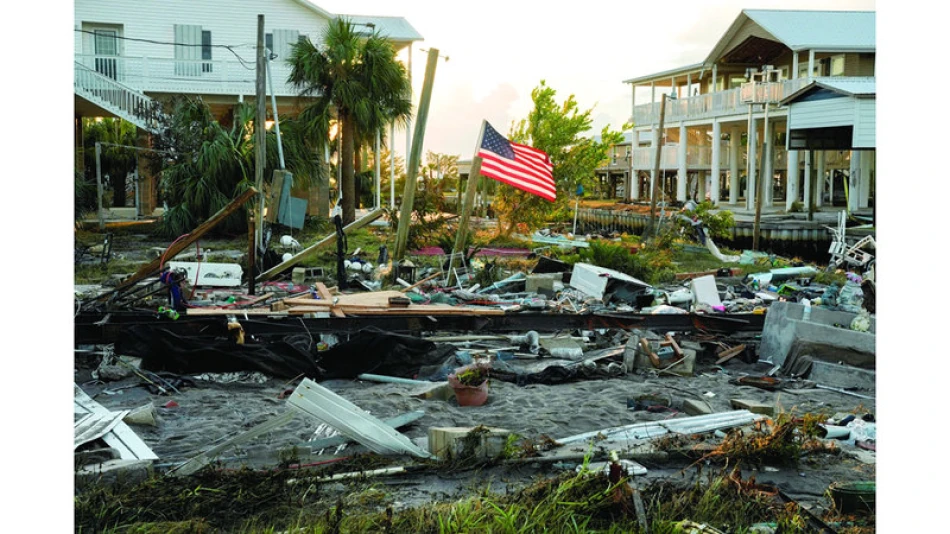
America Reevaluates Disaster Relief Policies for a More Effective Response
Trump's Disaster Relief Overhaul Could Reshape America's Crisis Response
Calcasieu Parish in southwestern Louisiana endured a brutal stretch five years ago—four federal disaster declarations in just 10 months from hurricanes, winter storms, and flooding. The federal government's checkbook opened wide under Biden, but Trump's new approach to disaster relief threatens to fundamentally alter this dynamic, forcing states to shoulder more costs while potentially creating both harmful and beneficial changes to America's $42 billion annual emergency response system.
The Calcasieu Test Case: When Disasters Strike Oil Country
In August 2020, Hurricane Laura tore through Calcasieu Parish with such ferocity that it ripped off roofs like paper and disabled wind measurement equipment. Buildings swayed like ships as the petrochemical hub—built on oil, gas, and chemical infrastructure—faced successive disasters: Hurricane Delta, Winter Storm Uri, and massive flooding followed in rapid succession.
Under the Biden administration, federal aid flowed generously. Louisiana typically receives nearly $1 billion per disaster from the Federal Emergency Management Agency (FEMA), with Biden covering 90% of the state's Hurricane Laura expenses. This parish exemplifies both the strengths and weaknesses of America's current disaster response framework.
Trump's Efficiency Drive: Slashing Federal Disaster Spending
Trump initially proposed eliminating FEMA entirely, but after Texas flooding killed over 135 people in July, he pivoted toward making the agency more "efficient." The direction is clear: one-fifth of FEMA's permanent staff has already departed, risk mitigation grant programs have been canceled, and the Homeland Security Secretary now requires personal approval for expenses exceeding $100,000.
Trump is rejecting some state requests for assistance while taking longer to approve others. An April FEMA memo outlined strategies for reducing federal spending by declaring fewer disasters and paying minimum reimbursements—dropping the federal share from Biden's generous 90% back toward the standard 75% minimum.
The Political Calculus Behind Disaster Declarations
Presidential disaster declarations have nearly tripled since the 1980s, from 25 annually to 63 per year over the past decade. This isn't just about worsening weather—it reflects political incentives where denying disaster aid carries electoral risks while approving it demonstrates federal responsiveness.
The Moral Hazard Problem: Who Pays, Who Decides
America's disaster system contains a fundamental flaw: federal taxpayers fund relief, but local authorities make land-use decisions about where and how to build. This creates perverse incentives where communities develop in disaster-prone areas, expecting federal bailouts when catastrophe strikes.
Harvard Law School's Susan Crawford argues Trump's approach should force states to think proactively about risk reduction amid climate change, potentially reducing long-term losses. Louisiana State University geography professor Craig Colten notes the state excels at "getting others to assume responsibility when trouble hits."
The Insurance Gap That Taxpayers Fill
A 2020 RAND Corporation study found only 28% of repair costs for public assistance recipients were covered by insurance. From local officials' perspective, FEMA money functions like an unlimited insurance policy with just a 25% deductible, says former FEMA deputy administrator Daniel Kaniewski, now at Marsh McLennan.
Federal Disaster Spending: From Millions to Billions
The federal role in disaster relief has exploded over five decades. In the 1950s, Washington covered less than 10% of total disaster losses. Today, it's at least half and sometimes much more, with over 30 agencies providing various forms of assistance.
FEMA's annual appropriations jumped from $5.8 billion (1990-2004) to $25 billion (2005-2021) after Hurricane Katrina marked a turning point. The past five years averaged $42 billion annually, driven partly by pandemic spending.
Winners and Losers Under Trump's New Framework
The impact will vary dramatically by geography and wealth. Large, populous states like Texas and Florida already handle major disasters independently and will transition more easily from managing "big disasters to bigger disasters," says Brian Koon, former Florida emergency management director now at AEM consulting.
Smaller states like Nevada or Rhode Island will struggle more, forced to develop capabilities they currently lack entirely. Poor, disaster-prone regions like Louisiana face the harshest adjustments, unable to replace federal funding that approaches $1 billion per major event.
Market-Based Solutions on the Horizon
FEMA could encourage better risk management by refusing grants to uninsured applicants or increasing reimbursement rates for insured entities. The Obama administration proposed requiring states to pay "disaster deductibles" before accessing federal funds, forcing them to internalize more risk.
Climate Reality Meets Fiscal Constraint
Trump's approach arrives as climate change intensifies certain risks while population growth in disaster zones increases costs. The current system's generosity may have encouraged risky development, but sudden cuts could leave vulnerable communities exposed during the adjustment period.
The ultimate test will be whether Trump's efficiency drive creates the right incentives for long-term risk reduction or simply shifts disaster costs to those least able to bear them. Louisiana's petrochemical parishes, built in hurricane alleys and flood zones, will likely provide the answer.
Most Viewed News

 Sara Khaled
Sara Khaled






